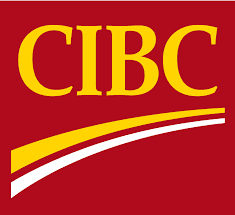6 tips for Canadian import/export businesses

How to take your business global (and save a whole lot of money along the way).
Here are six opportunities to upgrade the way you trade across borders. Let’s get down to business.
 This guide is sponsored by CIBC Global Money Transfers for Business. The best way to purchase products for import, pay international workers, or wire transfer money. Make cross-border money transfers or payments for your business. Learn more.
This guide is sponsored by CIBC Global Money Transfers for Business. The best way to purchase products for import, pay international workers, or wire transfer money. Make cross-border money transfers or payments for your business. Learn more.1. Open an import-export program account with the CRA
To import goods into Canada, you’ll need to open a CRA import-export program account. Upon registration, your business will be assigned a unique, nine-digit Business Number (BN) with an additional two letters and four numbers representing your import-export account. If your business already has a BN, it will be used to generate your new program account number.
Among other things, you’ll have to provide basic information about your business (name, location, mailing address etc.) and clarify whether your business will be importing goods, exporting goods or both.
Your import-export account number can be used to identify your business on invoices, customs forms and similar documents. It’s required if you run a business that involves bringing goods in or out of Canada. Your BN can also be used to deduct CPP, EI and other taxes from your payroll as well as file corporate income tax returns and register to collect GST/HST from clients or customers.
2. Find a reliable way to make global payments
One of the biggest challenges you’ll face when setting up an import/export business is finding the most cost-effective way to make international payments. There are a variety of ways to make payments globally – electronic funds transfers (EFTs), cheques, wire transfers or through dedicated money transfer services.
Dedicated money transfer services can be quick, but your bank may offer a wider range of transfer options all under one roof. For example, business account holders with CIBC have three options for transferring money overseas: Global Money Transfers for Business, CIBC Wire Payments and FX Online CIBC. Global Money Transfers for Business come with $0 transfer fees and lets you send to over 120 countries, while FX Online can help with electronic trading solutions. CIBC Wire Payments is useful for sending large amounts of money.
Depending on your financial institution, you may even be able to save money on fees by bundling accounts and services with the same bank. It’s also wise to leverage special offers wherever possible. For example, if you hold an eligible CIBC business bank account, you can get between $75-150 cash back on your first CIBC Global Money Transfer.
By taking advantage of zero fee transfers, preferred exchange rates and special deals, you can keep more of your hard-earned revenue and put it towards growing your business.
3. Find out about taxes, regulations and restrictions
You need to know the requirements for getting your goods through customs safely and legally. Exact requirements can vary depending on the goods being shipped and whether you’re importing or exporting goods, but the following are some important considerations:
4. Get help with shipping logistics
Shipping items overseas is a complex business. Not only must the goods be safely packed, correctly labelled and accompanied by relevant documentation, but they also need to be sent using an efficient, cost-effective shipping method.
Most import/export businesses use licensed customs brokers and freight forwarders. Licensed customs brokers are authorized by the government to gather and report all required data on your shipment and to remit all the necessary taxes and fees. Required data can include a list of suppliers, applicable tariffs and duties, the classification of your goods, the intended use of your goods, routing information and more.
Freight forwarders are experts in the logistics of shipping goods internationally. They understand which transportation methods are the safest and the most efficient and can oversee the complexities of getting your goods where they need to go.
When choosing a freight forwarder or licensed customs broker, look for an established firm with ample experience in your industry. Visit the Canadian Border Services Agency website to see a list of licensed customs brokers. Or check out the Canadian International Freight Forwarders Association (CIFFA) website to look for a member near you.
5. Calculate costs
There are lots of costs you’ll need to consider when developing your import/export strategy. As well as shipping charges, costs can include the following:
- Clearance fees. Clearance fees for exported goods are determined by the destination country. For goods imported to Canada, entry fees can cost anywhere from $15-$100+ depending on the declared value of your goods and your chosen shipping method. Clearance fees may be waived for low-value shipments of around $40 or less.
- Customs duty. Duty is an import tax based on the value, origin and classification of the imported goods.
- GST/HST/VAT. You may have to pay 5% GST on most goods imported to Canada. Goods exported to any country in the European Union may incur a value-added tax (VAT). Similar taxes may apply elsewhere. Import taxes may be waived for goods exchanged with countries with which Canada has a trade agreement or treaty.
- Insurance. Different types of insurance are available including coverage if your goods are damaged or an international buyer defaults or refuses to pay.
- Packaging and labelling. Costs vary depending on the size, shape and weight of your goods. Fragile goods will need extra protection during shipping, which can up your costs even more.
- Warehouse fees. The cost of storing your goods varies depending on the size and number of goods being shipped. Goods imported to Canada can move inland before clearing customs (yet remain under customs control) if transported to a licensed storage facility such as a sufferance warehouse or bonded warehouse.
The list of expenses varies depending on the goods involved and the countries you’re exporting to or importing from, so research is key. Once you understand the costs involved, it’s time to develop a detailed financial plan and business model.
6. Get expert help and advice
Expanding into the import/export world can be complicated and daunting, but you don’t have to do it alone. There’s plenty of help available – you just need to know where to find it. Here are some guides to help you get the information you need.
- Canada Border Services Agency guide to exporting commercial goods from Canada
- Canada Border Services Agency guide to importing commercial goods from Canada
- Government of Canada import-export program accounts
- Canada Border Services Agency guide to warehousing or storing your shipment
- Canada Post list of prohibited and restricted items for each country
- Reach out to CIBC’s experts to see how they can help you move money across borders
You can also find grants and business loans offered by the federal government and provincial/territorial governments. The Canada Small Business Financing Program (CSBFP) is one example of this.